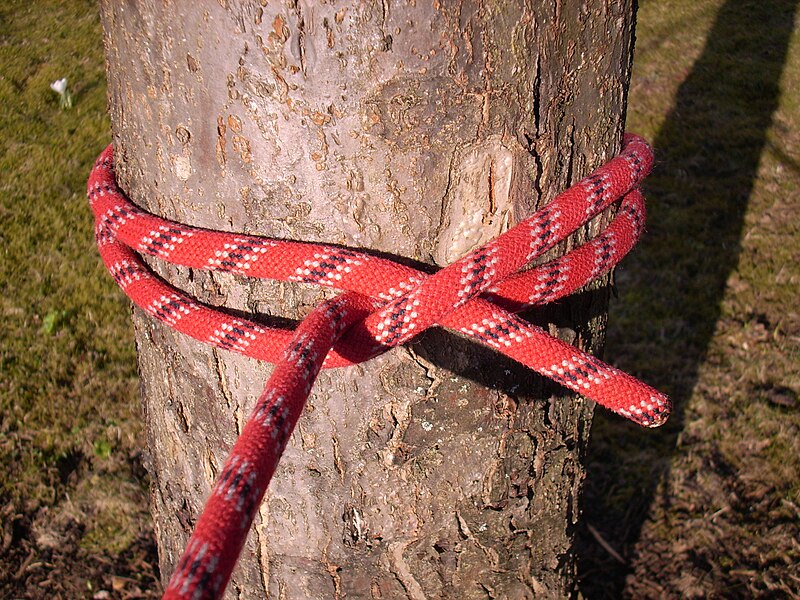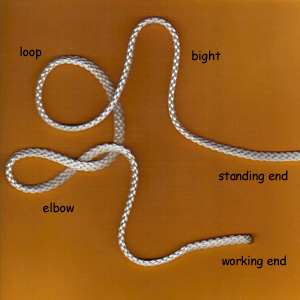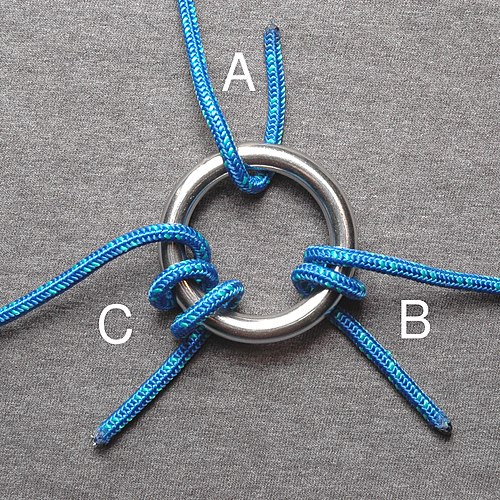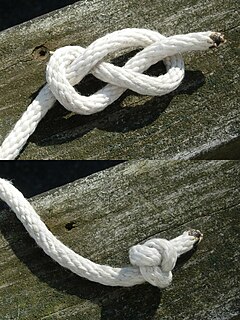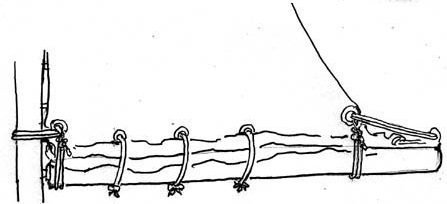Originally,
- a knot was made with the strands of a rope,
- a bend was for joining two lines,
- a hitch was for fastening a line to a ring or pole.
But the words are often used more freely.
Bights, Loops and Turns
A bight is a curved section of line, that you might use in making a bend or hitch.
This picture also shows a loop (which you might use in tying a clove hitch)
A is a turn,
B is a round turn (as in round turn and two half hitches),
C is two round turns.
Overhand Knot
This shows two overhand knots; the right hand one is pulled tight.

An overhand knot is not really very useful in ptactice.
Figure of Eight Knot
A figure of eight knot is used as a stopper knot to stop a line pulling though a fairlead. The lower picture is when the knot is pulled tight.
Reef Knot
This is one often the first knot (or bend) people learn - right over left and left over right, but it is a weak knot.

The only place it is used on a boat is for reefing a sail. It is realtively easy to 'capsize' it, to shake out the reef, by pulling one of the ends at right angles to the line.
Sheet bend
A sheet bend is for joioning two ropes, which may be of different sizes. A bight is made in the thicker rope, and the thinner one passes through the bight, round the back and through itself.

The two free ends should be on the same side.
On a boat, a sheet is a line for controlling a sail. The sheet bend is used to bend the sheet to the loop at the clew of a loose-footed sail.
Clove Hitch
